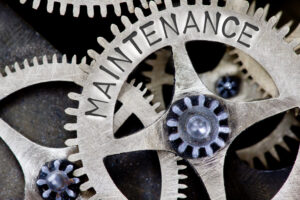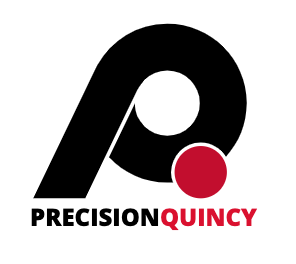
OVEN TROUBLESHOOTING – KNOWING WHAT TO CHECK AND WHEN
Maintaining and troubleshooting your industrial oven routinely will keep your process operating at peak production levels. Knowing what to check – and when – are the means to a successful oven maintenance program.
OLD VS NEW INDUSTRIAL OVENS
Industrial ovens have remained essentially unchanged over the years — they use an insulated chamber, create a heat source and employ some method of heat transfer. But many early thermal process ovens were not much more than boxes with heat. Today’s industrial ovens are much more reliable and efficient in their heat transfer methods, temperature uniformity and safe operation, while offering a wider choice of sizes, temperature ranges, and operational control. These changes have resulted in more diverse oven applications and greater productivity, but also have created new areas of concern. Like the cars produced today, modern industrial ovens are much more complex, require more attention, and demand a greater understanding of how they function and how to maintain them.
Of course, not only the equipment has changed — but also how ovens are used and the standard for care and maintenance have changed as well. More emphasis is placed on safe oven operation than ever before so effective, cost-conscious industrial oven troubleshooting procedures have become increasingly important.
Properly maintaining and troubleshooting your industrial oven will allow your operation to stay at peak production levels. There are four areas to consider:
- Gas-fired industrial ovens
- Electrically heated ovens
- General oven concerns and overall equipment condition
- General oven maintenance issues
When a thermal processing oven is not operating properly — for any reason, known or unknown — oven repairs should be performed promptly by trained personnel who have a thorough understanding of the oven equipment. Care and maintenance personnel should be able to read and work with electrical schemata and mechanical layouts — they are the keys to safe oven operating procedures. See our industrial ovens page for more information on oven design, applications, chambers sizes, etc.
TROUBLESHOOTING GAS-FIRED OVENS
Gas-fired industrial ovens present special safety and operating concerns because all parts of the fire triangle — fuel, oxygen and a source of ignition — exist together. So, before and during startup of your oven, ask the following questions:
- Are all the safeties in the system working properly?
- Is the spark or current-ignition transformer operational?
- Are the blocking valves operating correctly?
- Is there a flame reading on the flame relay?
- Is the flame stable during high and low fire?
- Does the burner shut off during heat-up? (If it does, examine the airflow switches for restrictions or the high limits for an excess temperature situation.)
- Is the flame the proper length? Is the BTU/hr output within specifications?
- Are the burner controls working properly? (If needed, make adjustments to the controller or programmer to correct temperature overshoot or heat cycle oscillation.)
Most gas fired industrial ovens follow a prescribed start sequence that, if followed through, will lead you to the area or cause of failure. Most problems can be isolated to an electrical limit or safety that is not being met, and replacing the part usually fixes the problem. Likewise, if troubleshooting indicates a faulty mechanical component, replacing the suspect part usually resolves the issue.
However, as burners and their control methods have become more complex, isolating and repairing oven problems has become more difficult, so it is important to understand how gas burners operate as a heat source. Generally, a burner has three requirements for operation: Fuel, Air, and a Spark.
When these three things are present, a burner will operate. But proper operation is more complicated: Key aspects include maintaining the correct air-to-fuel ratios at all operating ranges, correct airflow design, and adequate return-air allowances to ensure proper heat dissipation.
As burners’ efficiencies increase, they are less forgiving of disturbances such as dirt or changes in operating conditions. If operated properly, however, a gas burner will last for many years and provide stable, reliable service.
To properly maintain your gas burner, you should check the following every six months or as needed:
- Are the fan blades clean and clear of debris?
- Is the check valve clean and in operating condition?
- Is there any foreign material lodged in the valve housing?
- Is gas evenly dispersed in the gas manifold? (You can check this visually.)
- Is the flame length and color correct at both high and low fire? (Flame color and length vary according to burner type and fuel source.)
- Is the flame reading at the flame relay correct? (If not, check for build-up of contaminants on the flame rod or UV scanner.)
The burner is the heart of a gas-fired industrial oven. Keeping it within specifications can help ensure your process is operating safely and effectively.
MAINTAINING YOUR OVEN FOR LONG-TERM RELIABILITY
So, your oven is operating the way it ought to be. How do you make sure it stays that way? In these times of bottom-line costs and tighter profit margins, it is increasingly important to reduce costly downtime and potentially expensive capital investments. One of the easiest and most cost-effective ways to do this is a thorough and complete oven maintenance program.
Three important questions to ask when developing a maintenance program are: Who, What and When.
Who will be doing the work? Are they knowledgeable in the areas needed? Do they have the expertise to make adjustments or change control configurations? Can they make the calibrations necessary for your oven equipment? What will be covered in the maintenance agreement? Will only faulty equipment be serviced, or will preventative services be performed as well? When will the service be provided: Yearly, Quarterly, or Monthly?
Industrial oven maintenance is an important weapon in your efforts to protect your equipment, prevent costly downtime and maximize production. Spare parts should be assembled and stocked for your gas-fired oven. In addition, schedule regular oven inspections and verify:
- All safeties
- Heat source operation
- Proper lubrication of parts
- Oven calibration
- The internal heat profile
General inspections should be performed routinely to ensure proper and safe oven operation. While a maintenance program may seem an expensive luxury, a single costly or untimely accident will prove it is a bargain.

TROUBLESHOOTING ELECTRICALLY HEATED OVENS
Electrically produced heat sources have different basic requirements than gas-fired heating systems. Before and during startup of your electric industrial oven, ask the following questions:
- Are all the safeties in the system operating properly?
- Is the signal-to-control mechanism functioning correctly?
- Is the contactor or SCR power controller performing effectively?
- Is the heat output appropriate?
- Has the electrical current output on the SCR power controller changed?
- Is the control system operating correctly?
- Are the heater elements shutting off during heat-up? (If they do, examine the airflow switches. Remember though, on-off control heaters will cycle on and off during heat-up.)
- Is the current load correct for the elements?
- Is the heater bank properly controlled? (If necessary, adjust the controller to correct temperature overshoot or heat cycle oscillation.)
An electrically produced heat source needs only a source of current and a method of transferring that current, which is typically provided by heating elements. Elements are simply metallic rods that dissipate the friction created by the current as heat. While the threat of fire is reduced using electric elements, their inherent nature ensures that the element’s response to sudden changes in heat requirements is slower than gas burners.
Elements can be configured to suit the heating requirements. Whether an inside delta, old-fashioned straight bank, or other configuration is used, there are four key factors to check to ensure proper operation of the electrical elements:
- The contactor or SCR’s output current
- The heater bank’s wiring
- The elements’ impedance rating
- And the elements’ sustained output
In addition, if three- phase controls are used, check for correct phasing.
Many changes have been made in the operational control of electrical heat sources, and with the use of SCR control and a greater understanding of airflow, electric heat sources are filling an ever-widening need.
GENERAL INDUSTRIAL OVEN CONCERNS
With more industries complying with ISO 9000 standards and overseas production becoming more competitive, there is a greater need for uniform control of heat. Not surprisingly, this is the area of industrial oven production that has changed the most.
Today’s industrial ovens operate within tighter tolerances and provide greater temperature uniformity across the work area than ever before. In part, this is due to increased understanding of airflow design, but changes in technology also have improved oven performance. With the advent of modulating gas valves and SCR controls along with the increased use of programmable controls, the only limit to temperature uniformity is fast becoming cost. There are some simple items to check to verify that your industrial oven is operating within design parameters:
- Is the duct work in good shape (no dents or damage)
- Does the product being processed have the same parameters as what the oven was ordered for? Is it the same size and density?
- Are the door seals intact and holding? Are all seals in good and serviceable condition?
- Has there been a change in product loading (new carts or racks) that may be affecting oven operating parameters?
Having a thorough understanding of your industrial oven will affect its final outcome — the product.
To get the most out of your oven, first be sure it is being used properly in terms of product layout and desired output. The relationship between the oven and the product influences the equipment’s overall performance and resulting product. Something as simple as how the industrial oven is loaded or a product’s orientation on a cart or hanger can affect results.
Second, be sure to stay abreast of cost-effective upgrades and improvements for your industrial oven — for example, multipoint temperature recorders used for quality assurance. Technology improvements cannot be ignored: A processor can take a proactive approach, or the marketplace will force him into an unfortunate game of “catch-up.”
A good understanding of your industrial oven equipment plus care and maintenance is an investment in your company and its success: It forces you to perform those functions needed to keep your oven equipment working for you, instead of against you. By understanding how your industrial oven works, you can take the steps needed to keep your product coming out the way you want it. Through implementing an on-hand spare parts lists and maintenance procedures, you can protect your reputation, improve market position (by ensuring production capabilities) and avoid the early replacement of expensive capital equipment. See also our Whitepaper page entitled Oven Safety 101: Understanding NFPA 86 Standards.


